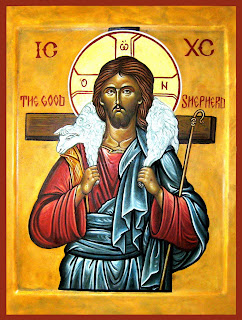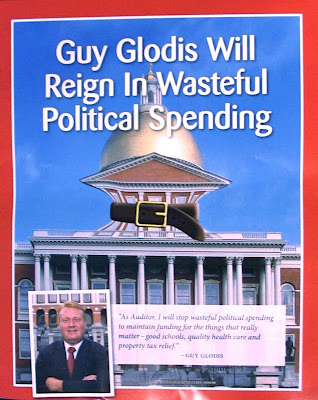Matthew 22:35-46 ~ Love of Neighbor
The Bible is the owners manual for life. In it we find everything we need to live the Christian life. Most of the time the words of Jesus are very complex and hidden within riddles that we need to unpack in order for us to have a full grasp of what he is saying. Today is not one of those days.
“You shall love the Lord your God with all your heart, and with all your soul, and with all your mind. This is the great and first commandment. And a second is like it, You shall love your neighbor as yourself. On these two commandments depend all the law and the prophets.”
This passage is pretty self explanitory, or is it? The love of God part people have no problem with. We know God, there is only one, and we love God with our entire being. We are Orthodox this is not a problem with us. We have a very good understanding of who and what God is.
But what about our neighbor? This is the question that we tend to have trouble with. Notice if you will, that there are no qualifications to who our neighbor is. It does not say, love your neighbor if you know them, or love your neighbor if they speak the same language you do, or love your neighbor if they are the same color as you. No there are no qualificaitons with love of neighbor. Also notice that this is not a suggestion, “on these two commandments” Commandment, and order, something that we are required to do.
“What good is it, my brothers, if someone says he has faith but does not have works? Can that faith save him? If a brother or sister has nothing to wear and has no food for the day, and one of you says to them, “Go in peace, keep warm, and eat well,” but you do not give them the necessities of the body, what good is it? So also faith of itself, if it does not have works, is dead.” James 2:14-17
Without works our faith is dead! If we do not show our faith, and faith = love, then our faith is a dead faith. Christianity is not a dead faith. Christianity is a faith that is alive because our God, that loves us, is alive. We must love our faith each and everyday and we do this by love of neighbor.
“When the Son of Man comes in his glory, and all the angels with him, he will sit upon his glorious throne, and all the nations will be assembled before him. And he will separate them one from another, as a shepherd separates the sheep from the goats. He will place the sheep on his right and the goats on his left. Then the king will say to those on his right, ‘Come, you who are blessed by my Father. Inherit the kingdom prepared for you from the foundation of the world. For I was hungry and you gave me food, I was thirsty and you gave me drink, a stranger and you welcomed me, naked and you clothed me, ill and you cared for me, in prison and you visited me.’ Then the righteous will answer him and say, ‘Lord, when did we see you hungry and feed you, or thirsty and give you drink? When did we see you a stranger and welcome you, or naked and clothe you? When did we see you ill or in prison, and visit you?’ And the king will say to them in reply, ‘Amen, I say to you, whatever you did for one of these least brothers of mine, you did for me. Then he will say to those on his left, ‘Depart from me, you accursed, into the eternal fire prepared for the devil and his angels. For I was hungry and you gave me no food, I was thirsty and you gave me no drink, a stranger and you gave me no welcome, naked and you gave me no clothing, ill and in prison, and you did not care for me.’ Then they will answer and say, ‘Lord, when did we see you hungry or thirsty or a stranger or naked or ill or in prison, and not minister to your needs?’ He will answer them, ‘Amen, I say to you, what you did not do for one of these least ones, you did not do for me.’ And these will go off to eternal punishment, but the righteous to eternal life.” Matthew 25:31-46
So then who is our neighbor?
The Hungry
The Thirsty
The Stranger
The Naked
The Ill
Those in Prison
That is our neighbor, those are the people that we need to care for. We need to care for these folks not if we have the time, or the talent, or the treasure, no we need to care for them at all times because as St. James told us faith without works it dead. Being a Christian is more than Church festivals and coming here on Sunday. Being a Christian means rolling up your sleeves and getting dirty. Being a Christian means sitting with someone and just listening to their story, or serving them a meal, or just loving them because they, like you, have been created in the image and likeness of God!
Notice in the passage from Matthew that it says “I” was hungry and “you” gave me food. No where in that sentence does it say When I was hungry the government gave me food! Jesus is not telling us that we need to make sure the government does these things, in fact Jesus would say this is not their job at all but ours.
Christian talk show host and financial guru Dave Ramsey said one time that the Church needs to give the government out of business. When did it become the responsibility for the government to love our neighbor? When did it become the job of the government to do the job of the church? Do we want the government to distribute communion? I do not think so, so why then do we ask the government to feed, cloth, provide drink to our neighbor? This is our job and we need to get back to it!
The entirety of the Gospel message can be boiled down into one word, LOVE. This is an attribute that makes us different from the rest of the word. When we help someone its because we love them because they are a child of God as we are. When we help someone it is not out of some sense of duty because we collected tax money, no it is out of love, the love that God has for us that we are required to show others.
So there it is. How do we prove to the world that we are Christians? We prove it to them by our love of neighbor. Who is our neighbor, everyone! We cannot fix the world, but we can try and fix our little corner of it right here. Plant the seed, water it, and it will grow and bear fruit. We have to start, by starting to love those of us who are in this room right now. All of us are neighbors, and we have to love all. God’s love, like the love of a father, does not discriminate. Jesus did not tell the man in Gospel that he only had to love those that agree with Him, no he said love your neighbor as yourself. That is the only qualification.
In the end it all boils down to love. Love God and love of neighbor. Nothing else matters.



